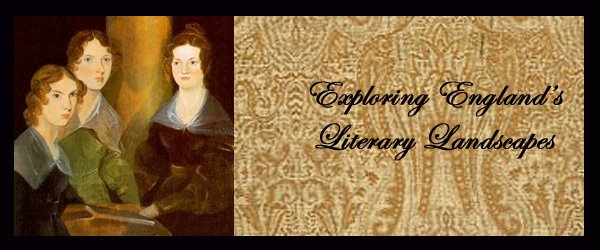After a breakfast that included fresh berries, cherries, a wonderful "Linda McCartney" vegetarian sausages, we started the day's touring in Stratford at the Shakespeare exhibition and Shakespeare's birthplace. Anxious to see Shakespeare's original home, I was tempted to rush through the exhibition, but there were a few interesting pieces in the exhibition. One was the original register that records both the birth and death of the famous playwright. It also displayed informative family trees and and maps of Stratford as it would have been during Shakespeare's time. After passing through the exhibition, we passed through a garden before entering the home. In one of the first rooms that we entered, we walked on the oldest stone floors in the house, and the guide said it is likely that the Shakespeare's walked on those very floors. The father's workroom (He was a glover.) and the girls' bedroom were interesting, but even more noteworthy was Shakespeare's birthroom. The bed had a cradle and a pullout trundle for the smaller children, who, according to the guide, were not allowed to move out of their parents' room until they were able to prove that they could light and put out their own candles. The boys would also have to be able to climb the ladder to the attic room where they slept. The museum was careful to point out that it has welcomed many famous visitors over the years. Thomas Carlyle etched his name in the window, while John Adams and Thomas Jefferson both signed the register. Other well-known guests have included John Keats and Thomas Hardy.
Our next stops were at Hall's Croft, Nash's House, and the New Place. Hall's Croft was the home built Shakespeare's oldest and apparently favorite daughter, Susanna, and her husband John Hall, a prominent physician. It is a beautiful timber frame house with impressive furniture from that period. We spoke with a guide about why Susanna and not Shakespeare's other daughter, Judith, seemed to be the favorite. She told us that Judith married a "n'er do well" and perhaps may not have been very intelligent. (She always signed documents with a cross instead of her name, indicating that she may have been illiterate.) We also learned that Shakespeare's knowledge of medical practices likely came from his association with his son-in-law. The New Place, which is really more of a garden with the outlines of a former house, marks the location of Shakespeare's last home in Stratford. It was a very large home, built after he had become a successful playwright. This was the home at the time of his death, but unfortunately, it was torn down by a later owner who was enraged by the number of adoring admirers coming to see the home in the centuries after Shakespeare's death. Nash's Place is the home of Shakespeare's granddaughter (Susanna's daughter, Elizabeth). She was Shakespeare's last surviving descendant. The highlight of this home was seeing Shakespeare's publications throughout the centuries, from the originally published quartos, to the First Folio, to the 1986 definitive (or so says the exhibition) version of the bard's works. I was able to view of copy of Keats' annotated copy of the complete works, in which I read a handwritten poem by Keats, composed after reading King Lear. Of course, he expressed his admiration of the playwright in beautiful and flowery language.
Our final Shakespeare-related stops were just outside of Stratford at Anne Hathaway's Cottage, the family home of Shakespeare's wife, and Mary Arden's House, the home of Shakespeare's mother. Both properties were lovely, though the Hathaway Cottage had a stunning garden. The Arden Home is really a farm, and we enjoyed seeing longhorn cattle, donkeys, pigs, and birds there. We were even able to see an exhibition by the falconer.
From the Arden homestead, we hopped onto the A46and headed for the M1, the major north-south motorway in England, for out trip to Haworth. Lasting approximately three hours, it was our longest trip yet, and there were plenty of other cars and semi-trucks alongside of us. We skirted the cities of Leicester, Sheffield, and Nottingham, and we drove through portions of Sherwood Forest. This part of the country certainly has a more industrial feel to it. As we drove away from the main motorway and into Haworth, however, the landscape changed, and the sloping hills crossed with walled enclosures and dotted with goats dominated our views.
Once at our bed and breakfast, which was located on a beautiful hilltop street in the heart of the tiny town, we chatted with the owners, Philomena and David, before setting out for a short hike on the moors. We used a footpath to cross a field beside the Bronte Parsonage before taking a trail further up the hill for an expansive view of the valley below us. The scenery was phenomenal - the best of the trip so far, I think. The weather had finally turned sunny, and though a breeze was blowing, we were not chilly. On our return to the village, we enjoyed dinner at The White Lion, a restaurant/pub recommended by Philomena. It sits just across the street from The Black Bull, where Branwell Bronte used to drink on a too-regular basis. With its timbered roof, dark red velvet upholstery , and dark wood furniture, it was everything a comfortable pub should be, but with really good food. It was a lovely end to a great day.
Note: I am now a day behind with my posting, so this is actaully a hurried (And probably error-filled) post about yesterday's adventures. We are now in York, and I'll be back as soon as possible with more updates.
Tuesday, July 3, 2007
Subscribe to:
Post Comments (Atom)










No comments:
Post a Comment